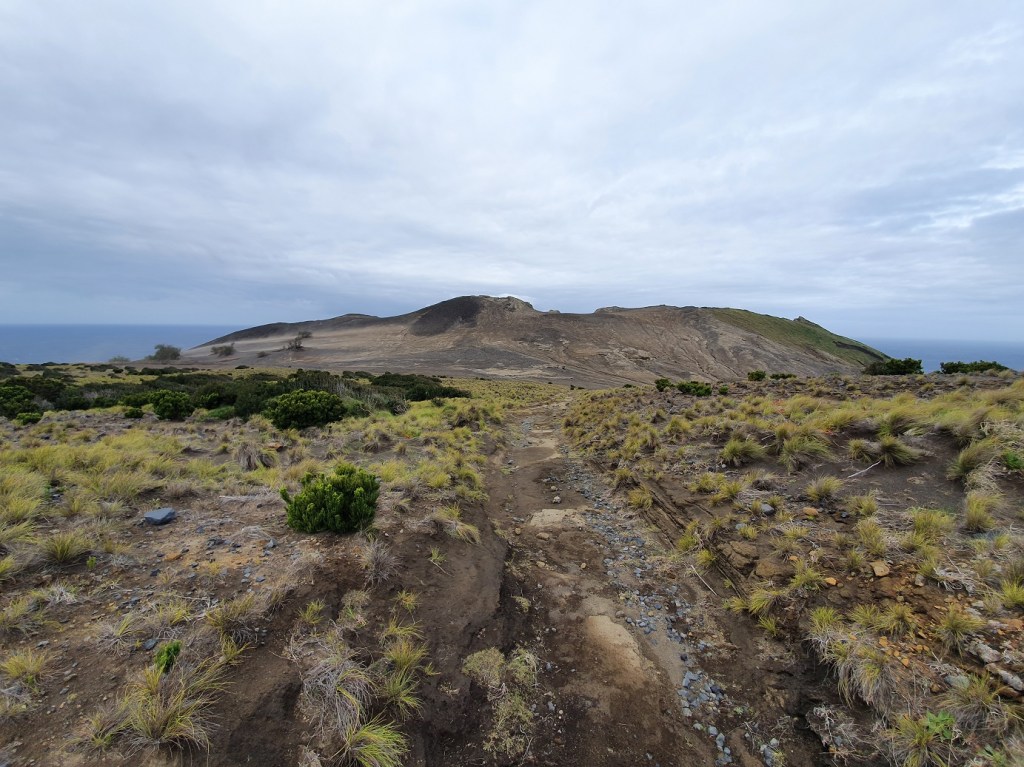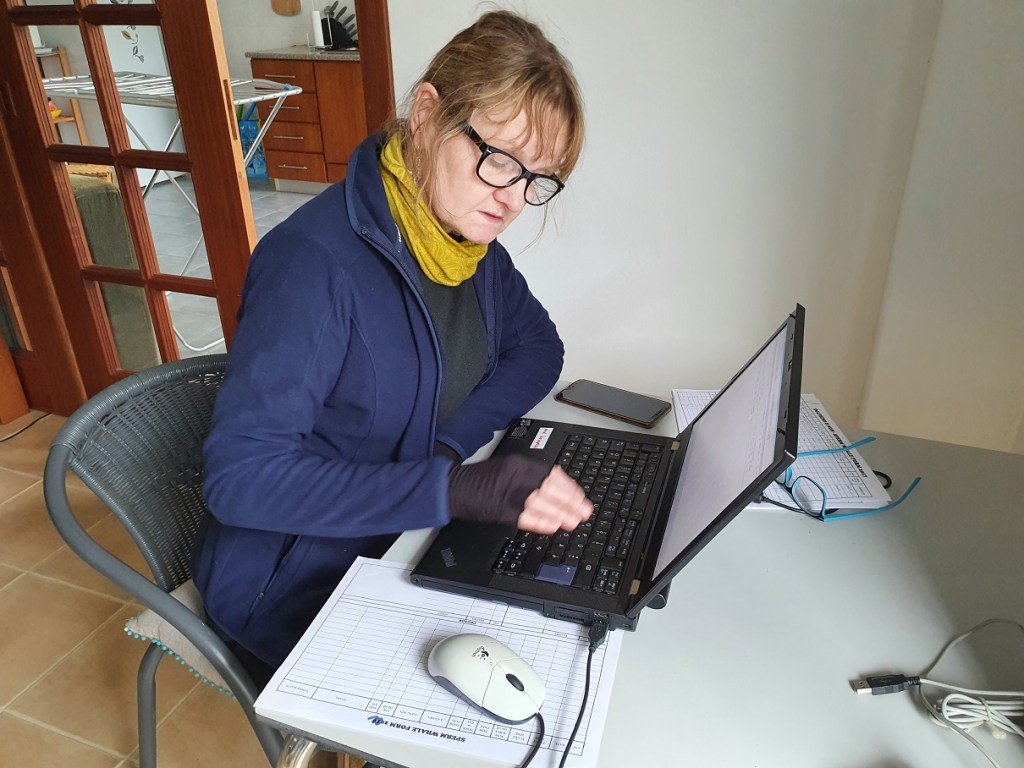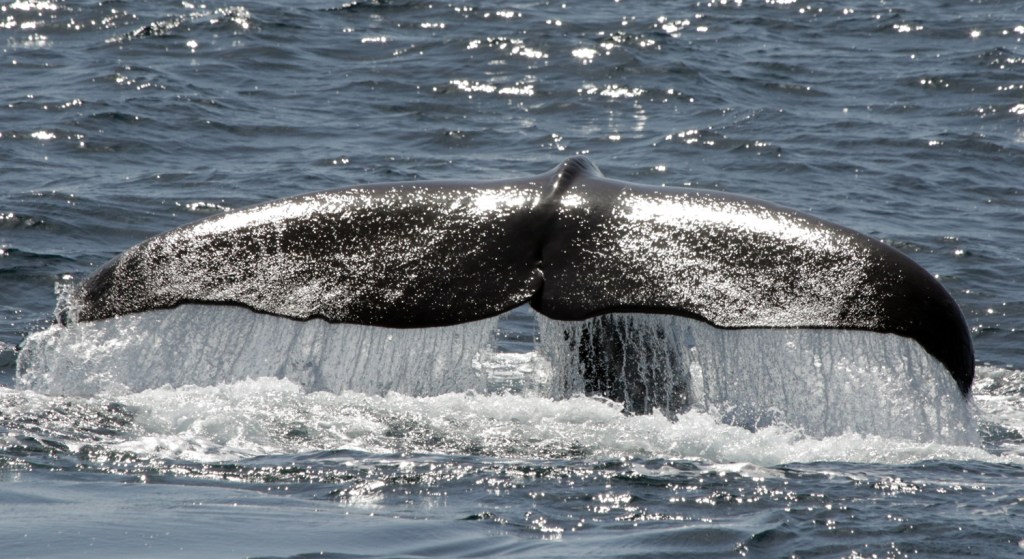After our epic long day out on the water, strong winds and rains were on the programme for three consecutive days, meaning onshore action instead of whale volunteer work. To start with, expeditioners were given Friday off and tempted their luck to enjoy the view of the caldeira, but alas it was fully covered in clouds. The stunning view of Capelinhos compensated for this, even if it meant getting sand-blasted by strong winds. Given the ongoing earthquakes on São Jorge island (which do not affect the expedition in any way as they are limited to that island, which is on a different geological fault line), the museum was an ideal place to learn about local geology and the volcanic origin of the archipelago. A nice coastal path to Varadouro meant we could appreciate the rough seas from a safe distance.
On Saturday Lisa, our expedition scientist, trained our whale and dolphin citizen scientists on photo-identification. This method records through photographs features of a whale or dolphin that are unique, a bit like a human fingerprint. For sperm and humpback whales, the fluke is distinctive. For Risso’s and bottlenose dolphins, nicks and scars on the dorsal fin work well and for blue whales it is the mottling pattern on their back that is unique. As I am sure our Azores citizen scientists can confirm, it requires patience and concentration to go through the many photographs, sort them and try to find a match. Yet it is a nice way to unravel the mysteries of cetacean life history ‘one fluke at a time’. Long-term data and sharing photo-ID work gives insight into migration patterns, population estimates, social dynamics and more. Sure enough, Stephen found a match between a sperm whale seen at Sāo Miguel in 2013 and one seen by Lisa last year.
More heavy rains and winds meant another day staying on land. An ideal chance to visit the waterfall near the house, to go down to the harbour to find a spot for Biosphere Expeditions’ annual painting – which you will read more about in upcoming diary entries.
On Sunday everyone was keen to get back out, even if conditions were not ideal. Physeter, our catamaran, was actually the only boat going out to sea. On the front deck, the look-outs were synchronising their hip and knee movements with the waves. On the upper deck the POPA team was busy recording data on conditions, sea birds, sea turtles, trash and cetaceans. The photographers had to deal with a lot of movement – the boat, the animals, the waves, while trying to keep balance themselves. No easy conditions to get the shots needed for photo ID. But braving the elements did pay off. We had a really nice sighting of a large 16 m long male sperm whale cruising around in search of females. He even came to check out the boat, with eight women on board, but clearly not the right match for him. He did a first deep dive and we decided to stay in the area. Roughly 45 minutes later we saw him again at the surface, giving us a second chance for a fluke shot. Two more sperm whales were detected nearby. They day also brought our first encounters with three different young loggerhead turtles and the common dolphins were also around as they have been each day so far, making this a rewarding Sunday out.
Conditions are good in the coming days, so stay tuned for more.








